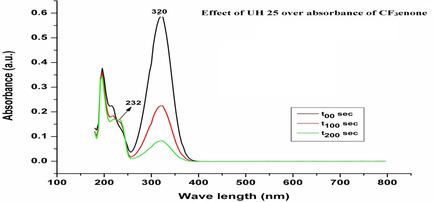当前位置:
X-MOL 学术
›
Propellants Explos. Pyrotech.
›
论文详情
Our official English website, www.x-mol.net, welcomes your feedback! (Note: you will need to create a separate account there.)
Catalyst Free Single Step Specific Determination of Hydrazine in UH 25 blend and Determination of Propellant Grade UH 25 blend Using Thiophenes with Active Carbonyl Groups
Propellants, Explosives, Pyrotechnics ( IF 1.8 ) Pub Date : 2021-03-22 , DOI: 10.1002/prep.202000256 S. Selvakumar 1 , K. Audisesha Reddy 1 , B. Munirathinam 2
Propellants, Explosives, Pyrotechnics ( IF 1.8 ) Pub Date : 2021-03-22 , DOI: 10.1002/prep.202000256 S. Selvakumar 1 , K. Audisesha Reddy 1 , B. Munirathinam 2
Affiliation

|
Hydrazine and its derivatives such as monomethyl hydrazine (MMH), unsymmetrical dimethyl hydrazine (UDMH), and UH25 (a blend of 75 % UDMH and 25 % hydrazine hydrate by w/w) namely hydrazines are used as fuels (in liquid form) for rocket stages and satellites. They are hypergolic and well-known toxic compounds. Workplace atmospheres involving vapours / liquid forms of these hydrazines need to be routinely monitored and screened. Simple, economical, and rapid kinetic spectrophotometric techniques are developed to meet the requirements by using thiophene-3-carboxaldehyde and 3-butenone (E)-1,1,1-trifluoro-4-(3-thienyl) (CF3enone) and compared. Classical −CHO based technique is applied for UH25 blend (in aqueous medium) in the presence of an acid catalyst. CF3enone based technique is used to determine hydrazine (Hz) in UH25 (in organic medium) selectively at levels as low as 0.05 mM without any catalyst. Variables such as temperature and concentration are optimized to determine UH25 in the concentration range of 0.5 mM to 0.1 M for thiophene-3-carboxaldehyde and to determine Hz of UH25 blend in the concentration range of 0.1 mM to 0.6 mM for CF3enone. Minimum detectable limits are found for UH25 and Hz of UH25 blend in the respective studies. GC-MS study is also carried out to meet the unequivocal identification requirement. Initial rate and fixed time methods are adopted as calibration procedures. Orders of the reactions are found in both studies. Both techniques are simple and rapid after the chemisorption process with derivatizing agents in which pre-treatment, pre-concentration, and extraction steps are not involved. Advantages of CF3enone based technique over aldehyde-based classical technique are 1) requirement of the minimum concentration of derivatizing agent 2) no catalyst 3) selectivity and specificity towards hydrazine in UH25 blend 4) shortened analysis time 5) linear dynamic range at very low concentrations of UH25.
中文翻译:

UH 25 混合物中肼的无催化剂单步特定测定和推进剂级 UH 25 混合物的测定使用具有活性羰基的噻吩
肼及其衍生物,如单甲基肼 (MMH)、不对称二甲基肼 (UDMH) 和 UH25(75% UDMH 和 25% w/w 水合肼的混合物),即肼用作燃料(液体形式)火箭级和卫星。它们是自热且众所周知的有毒化合物。需要定期监测和筛选涉及这些肼的蒸气/液体形式的工作场所气氛。通过使用 thiophene-3-carboxaldehyde 和 3-butenone (E)-1,1,1-trifluoro-4-(3-thienyl) (CF 3 enone)开发了简单、经济和快速的动力学分光光度计技术来满足要求并进行了比较。在酸催化剂存在下,经典的基于 -CHO 的技术适用于 UH25 混合物(在水性介质中)。CF 3基于烯酮的技术用于在没有任何催化剂的情况下选择性地测定低至 0.05 mM 的 UH25(有机介质中)中的肼 (Hz)。优化温度和浓度等变量以测定 0.5 mM 至 0.1 M 浓度范围内的噻吩-3-甲醛 UH25 和测定 0.1 mM 至 0.6 mM 浓度范围内 CF 3的 UH25 混合物的 Hz烯酮。在各自的研究中发现了 UH25 和 UH25 混合物的最低可检测限度。还进行了 GC-MS 研究以满足明确的鉴定要求。采用初始速率和固定时间方法作为校准程序。在这两项研究中都发现了反应的顺序。在使用衍生剂进行化学吸附过程之后,这两种技术都简单而快速,其中不涉及预处理、预浓缩和提取步骤。基于CF 3烯酮的技术相对于基于醛的经典技术的优点是 1) 要求衍生剂的最低浓度 2) 无催化剂 3) 对 UH25 混合物中肼的选择性和特异性 4) 缩短分析时间 5) 线性动态范围低浓度的 UH25。
更新日期:2021-03-22
中文翻译:

UH 25 混合物中肼的无催化剂单步特定测定和推进剂级 UH 25 混合物的测定使用具有活性羰基的噻吩
肼及其衍生物,如单甲基肼 (MMH)、不对称二甲基肼 (UDMH) 和 UH25(75% UDMH 和 25% w/w 水合肼的混合物),即肼用作燃料(液体形式)火箭级和卫星。它们是自热且众所周知的有毒化合物。需要定期监测和筛选涉及这些肼的蒸气/液体形式的工作场所气氛。通过使用 thiophene-3-carboxaldehyde 和 3-butenone (E)-1,1,1-trifluoro-4-(3-thienyl) (CF 3 enone)开发了简单、经济和快速的动力学分光光度计技术来满足要求并进行了比较。在酸催化剂存在下,经典的基于 -CHO 的技术适用于 UH25 混合物(在水性介质中)。CF 3基于烯酮的技术用于在没有任何催化剂的情况下选择性地测定低至 0.05 mM 的 UH25(有机介质中)中的肼 (Hz)。优化温度和浓度等变量以测定 0.5 mM 至 0.1 M 浓度范围内的噻吩-3-甲醛 UH25 和测定 0.1 mM 至 0.6 mM 浓度范围内 CF 3的 UH25 混合物的 Hz烯酮。在各自的研究中发现了 UH25 和 UH25 混合物的最低可检测限度。还进行了 GC-MS 研究以满足明确的鉴定要求。采用初始速率和固定时间方法作为校准程序。在这两项研究中都发现了反应的顺序。在使用衍生剂进行化学吸附过程之后,这两种技术都简单而快速,其中不涉及预处理、预浓缩和提取步骤。基于CF 3烯酮的技术相对于基于醛的经典技术的优点是 1) 要求衍生剂的最低浓度 2) 无催化剂 3) 对 UH25 混合物中肼的选择性和特异性 4) 缩短分析时间 5) 线性动态范围低浓度的 UH25。



























 京公网安备 11010802027423号
京公网安备 11010802027423号